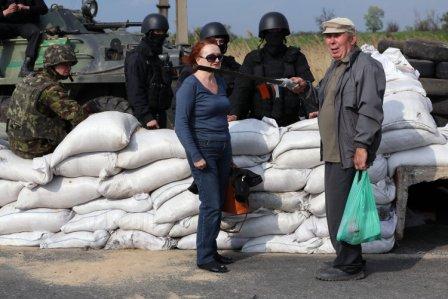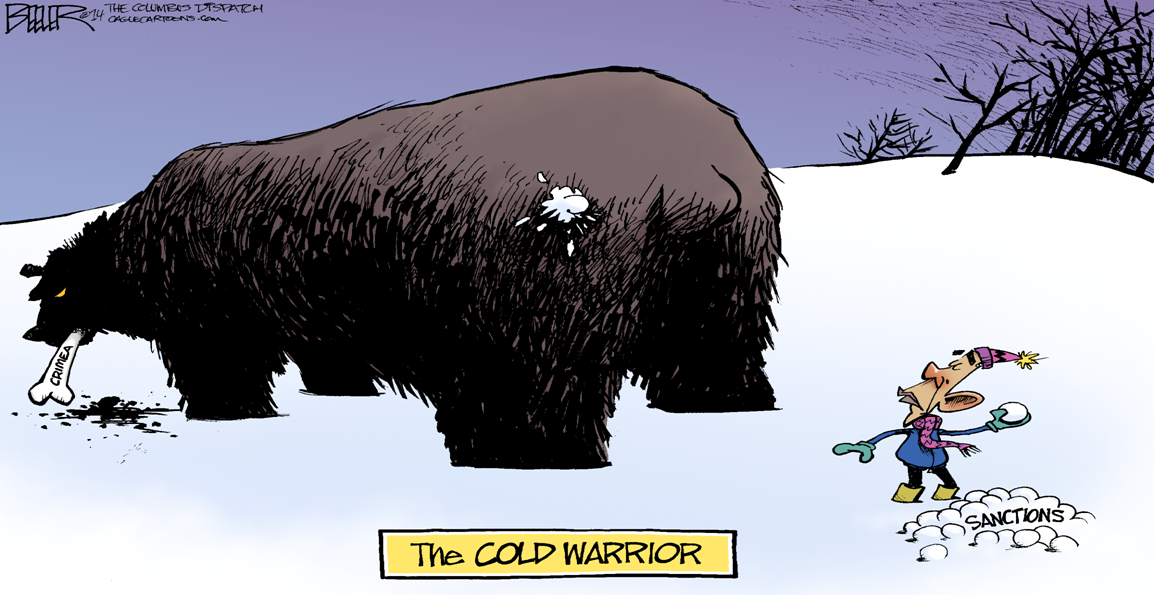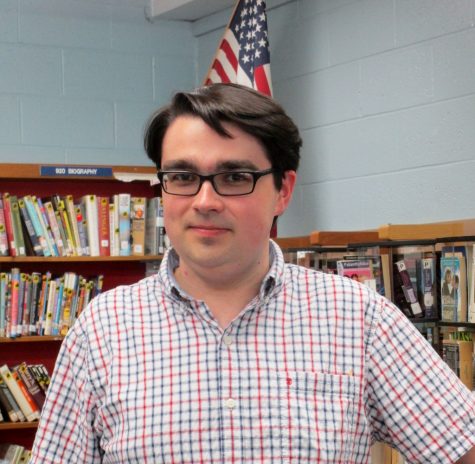Crimean Crisis
Cold War Era Tensions Rise as Russia Annexes Part of Ukraine

Residents of Slovyansk, Ukraine, talk to Ukraine National Guard soldiers outside the town on Sunday, May 4, 2014. (Sergei L. Loiko/Los Angeles Times/MCT)
On February 28, the citizens of the Crimean Peninsula, a small piece of land jutting out of Ukraine and into the Black Sea, woke up to find that armed men had surrounded their major airports while others had taken the regional parliament building. Flash forward to March 16, the official results of a vote were published showing that a suspiciously large majority of participants (97 percent) had decided to allow their land to be absorbed back into Russia, the region’s former master. Two days later, Russian President Vladimir Putin signed a treaty with the newly minted “Republic of the Crimea,” officially making it a part of the Russian Federation. How did this happen?
For many years the Crimea was a part of Russia, and was originally conquered by Catharine the Great in 1783. After World War II, it became a part of the totalitarian and Russian dominated Soviet Union. In 1954 it was handed over to Ukraine by Soviet Premier Nikita Khrushchev. At the time, Ukraine was also a part of the Soviet Union, making the transfer inconsequential. But, when the Red Empire collapsed in 1991, and Ukraine gained independence, the Crimean Peninsula went along with it.
Today ethnic Russians make up about 58 percent of the Crimea’s population. Per an agreement between Ukraine and Russia, the Crimean city of Sevastopol is also the home of Russia’s Black Sea Fleet.
Problems arose after Ukrainian President Victor Yanukovych, who also had been accused of corruption, rejected an agreement that would have strengthened economic ties between the European Union and his country. He instead chose to pursue closer ties with Ukraine’s former overlord, Russia. Putin was a big supporter of his. According to the BBC, over 100,000 protestors amassed in the capital city of Kiev last November. In December they would take over Kiev’s city hall and Independence Square, “turning it into a tent city.”
After weeks of deaths, bloodshed, arrests, and a legislative attempt at suppressing demonstrations, this series of protests, dubbed the “Euromaiden” by Twitter users, reached its climax on February 20 when 88 people were killed and many more were injured (according to the BBC); some reportedly by sniper fire. The next day Yanukovych agreed to a compromise deal which the New York Times reported “mandates early presidential elections by December, (and) a swift return to a 2004 constitution that sharply limited the president’s powers.”
Then, in a quick turn of events protestors entered executive buildings and the Ukrainian Parliament voted to remove the President from office. They also voted to free Yulia Tymshenko, an important female politician and a leader of the previous anti-corruption protests in 2004 who was controversially imprisoned back in 2011. Some claimed that her imprisonment was politically motivated. The BBC and various news agencies have reported that Yanukoych has since fled to Russia and in Ukraine a new government was elected.
The New Crimean War? On February 28, Crimeans found themselves being silently invaded, or at the very least in the middle of pro-Russian revolution. According to the BBC armed men in combat uniforms not bearing any insignia or other markings appeared outside of the area’s major airports while others took over important government buildings, like the Crimea’s Parliament building, raising the Russian flag above its roof. Checkpoints were also erected between the peninsula and Ukraine and there were numerous reports of these gunmen having Russian military equipment, including helicopters and armored vehicles.
The Ukrainian government accused Russia of illegally invading its sovereign territory, an accusation reiterated by many spectators in the West such as President Obama, who on March 1 told Putin to order his troops back to Russian military bases. As strategic locations were either being taken over or surrounded by these “soldiers,” the BBC reported that Putin denied that these men were part of the Russian military, instead claiming them to be local militiamen. Later, on March 4, according to NPR, in a press conference in which he claimed the men surrounding Ukrainian military bases were “local self defense forces,” Putin also said that any action Russia had taken was done with the intention of protecting ethnic Russians in the area.
A referendum to decide whether or not Crimea should join Russia was held on March 16, while armed men, most likely Russian soldiers, occupied the area. The vote revealed that a 97 percent majority of people who voted were in favor of being annexed by Russia. This vote is not widely accepted by western governments as legitimate.
Reports suggested that while many Crimeans (the majority of whom are ethnic Russians) were happy at the prospect of rejoining “the motherland,” others were not and boycotted the vote, the Tatars in particular. A minority in the Crimea, the Tatars were persecuted and deported by Joseph Stalin under the suspicion of that they had aided the Nazis when they invaded the area during World War II. They are not keen on living under Russian domination once again.
On March 24 the last of Ukraine’s armed forces stationed in the Crimea left the region. Elsewhere in Ukraine, pro-Russia demonstrations have occurred and continue to occur, mostly in Ukraine’s Russophile Eastern halve.
International reaction to Russia’s involvement in the Crimea, its secession and its subsequent annexation has largely been negative. The U.S. and many European countries have announced financial and travel restrictions against key individuals involved in Russia’s annexation. Recently NATO (the North Atlantic Treaty Organization), a mutual defense organization of which the United States is a founding member, has expressed concerns over Russian military buildup near the Ukrainian border. These events are of significant concern to U.S. allies and NATO members like Estonia and Latvia that are also former parts of the Soviet Union, have sizeable ethnic Russian minorities, and border Russia. Stay tuned, The Ukraine Crisis is shaping up to be a defining moment for 2014, and perhaps for this century.


Ian MacLeod is a member of the class of 2016. He joined the Green Wave Gazette his freshman year and became the Associate Editor as a sophomore and Editor-in-Chief...
